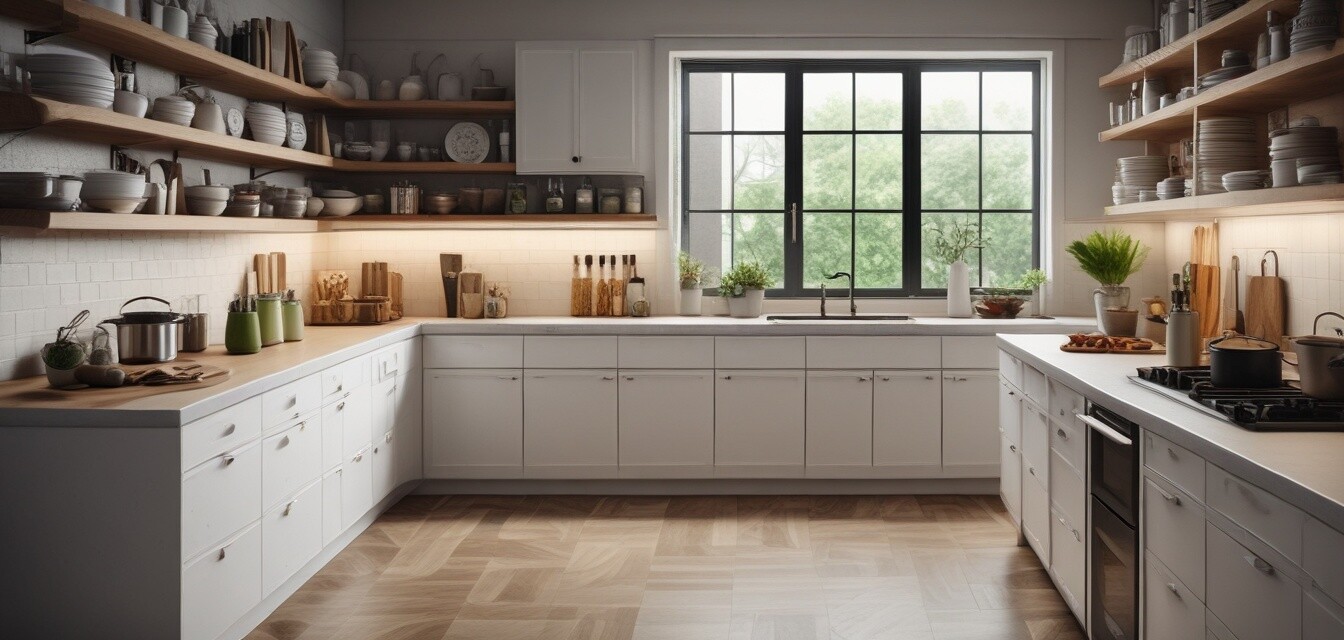
Disclosure: The FTC requires that this article indicate that it was created using AI and is not based on personal experience. It includes affiliate links, which means we may earn a commission if you purchase through these links at no extra cost to you. As Amazon Associates, we earn from qualifying purchases. Product recommendations and endorsements were generated by AI and do not reflect personal opinions or real-world use.
How to Maximize Kitchen Space for Group Cooking
- Organize and declutter your kitchen for efficient cooking.
- Utilize vertical space and smart storage solutions.
- Plan your layout to enhance workflow during group cooking.
- Incorporate multi-functional kitchen tools to save space.
- Establish designated zones for specific tasks and equipment.
Cooking for large groups can be a rewarding experience, but it often comes with its challenges, especially in terms of maximizing kitchen space. An efficient kitchen allows for smooth preparation and cooking, making the overall experience enjoyable for everyone involved. In this guide, we will delve into practical tips for optimizing your kitchen space, ensuring that you can prepare meals for a crowd without feeling cramped.
Understanding the Importance of Kitchen Space
When cooking for groups, having ample kitchen space is crucial. A well-organized kitchen not only enhances productivity but also improves safety and reduces stress. Here are some key reasons why maximizing kitchen space is vital:
- Facilitates teamwork and collaboration among cooks.
- Helps maintain cleanliness and order throughout the cooking process.
- Ensures that all necessary cooking tools and ingredients are within reach.
Key Strategies for Optimizing Kitchen Space
1. Declutter and Organize
Start by clearing out unnecessary items from your kitchen. Here’s how:
- Go through your drawers and cabinets, removing items that you don't utilize.
- Sort your utensils, pots, and pans according to usage frequency.
- Implement a "one in, one out" rule for any new items you purchase.
2. Utilize Vertical Space
When floor space is limited, think vertically. Installing shelves or racks can dramatically increase storage capacity.
| Storage Solutions | Benefits |
|---|---|
| Wall-Mounted Shelves | Keep frequently-used items off countertops. |
| Hanging Racks | Free up cabinet space by displaying pots or utensils. |
| Over-the-Door Organizers | Maximize unused areas by adding storage on cupboard doors. |
3. Plan Your Layout
Having a thoughtful kitchen layout streamlines the cooking process. Consider these zones for an efficient workflow:
- Preparation Zone: Dedicated space for chopping and mixing ingredients.
- Cooking Zone: Area designated for stovetops, ovens, and other cooking appliances.
- Serving Zone: Space where dishes are plated and ready for guests.
4. Multi-Functional Tools
Invest in kitchen tools that serve multiple purposes, helping you save space. Some examples include:
- Measuring cups that can nest within each other.
- Cutting boards that double as serving platters.
- Mixing bowls that can be used for storage.
5. Establish Cooking Zones
Creating separate zones for specific tasks will help everyone work efficiently. Discuss the tasks with your cooking team accordingly:
- Assign tasks based on availability and skills.
- Ensure each zone is stocked with the necessary tools and ingredients.
- Maintain clear pathways to avoid crowded spaces.
Storage Solutions to Consider
Here are some smart storage ideas that can help maximize your kitchen space:
| Type of Storage | Advantages | Disadvantages |
|---|---|---|
| Under-Cabinet Storage | Utilizes wasted space; keeps essential items handy. | Can be difficult to reach for taller items. |
| Pull-Out Drawers | Makes accessing deep cabinets easy; customizable. | May require professional installation. |
| Magnetic Strips | Great for storing knives and metal utensils; saves drawer space. | Not suitable for all types of knives or tools. |
Maximizing Countertop Space
A cluttered countertop can slow you down. Here are some practical tips:
- Regularly Clean: Clear off surfaces after each step to deal with clutter.
- Use Containers: Store frequently used ingredients in attractive jars, making them accessible.
- Limit Appliances: Keep only essential appliances on the counter and store others away.
Conclusion
Maximizing kitchen space for group cooking may seem daunting, but with a little planning and organization, it can become manageable. Evaluate your kitchen layout and workflow, implement multi-functional tools, and establish dedicated zones for cooking tasks. By adopting these strategies, you’ll ensure a more efficient cooking atmosphere, allowing you to focus on what truly matters – creating delicious meals for your group.
Beginner Tips for Group Cooking
- Start with simple recipes that require fewer ingredients and tools.
- Practice communication with your team to manage tasks effectively.
- Prepare as much as you can in advance – marinate, dice, and organize ingredients ahead of time.
Pros
- Efficient cooking process.
- Enhanced teamwork experience.
- Less clutter leads to better focus.
Cons
- Initial effort to organize may feel overwhelming.
- Investments in storage solutions can be costly.
Further Resources
For additional tips and techniques on cooking for groups, check out our related articles: